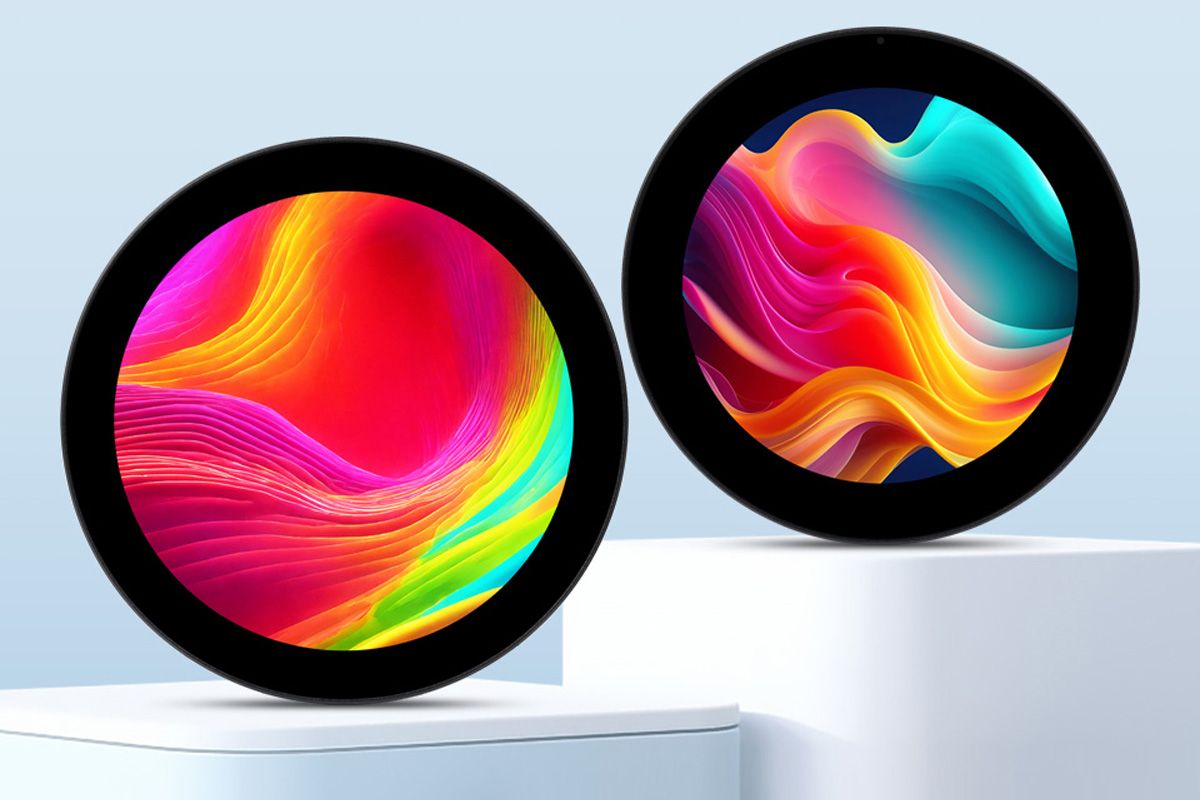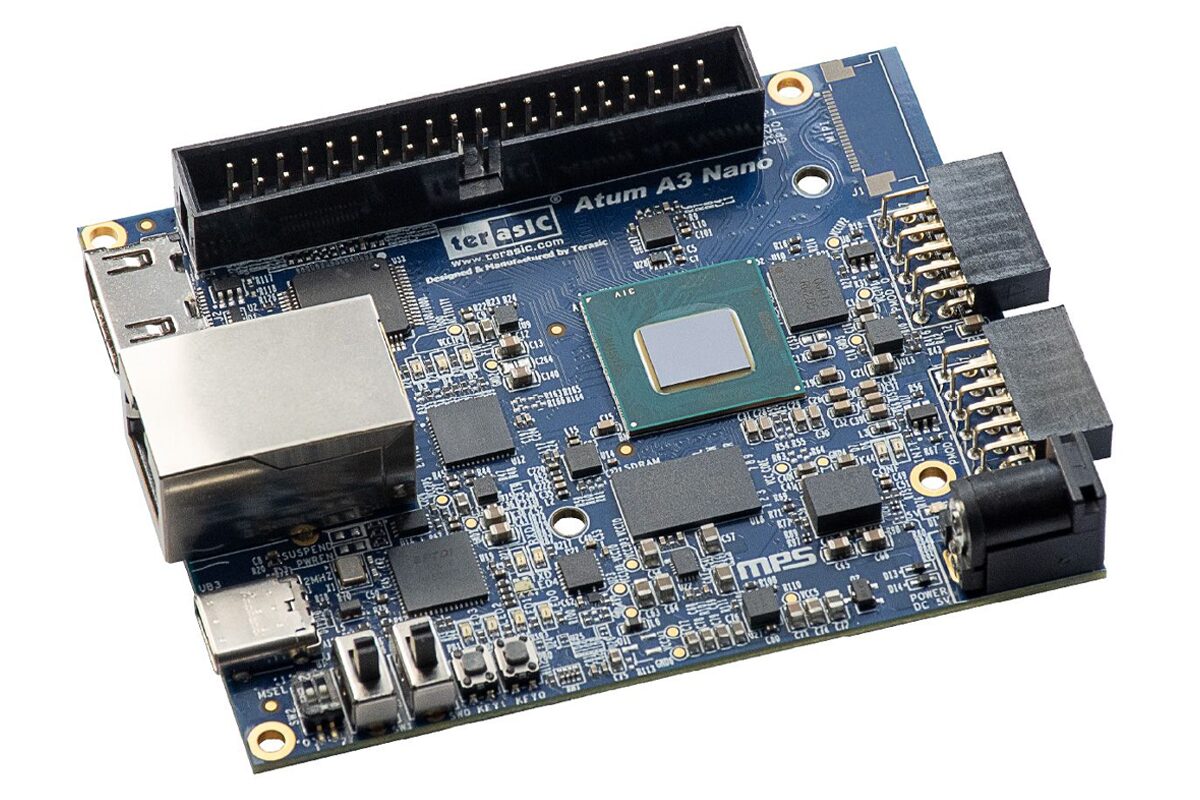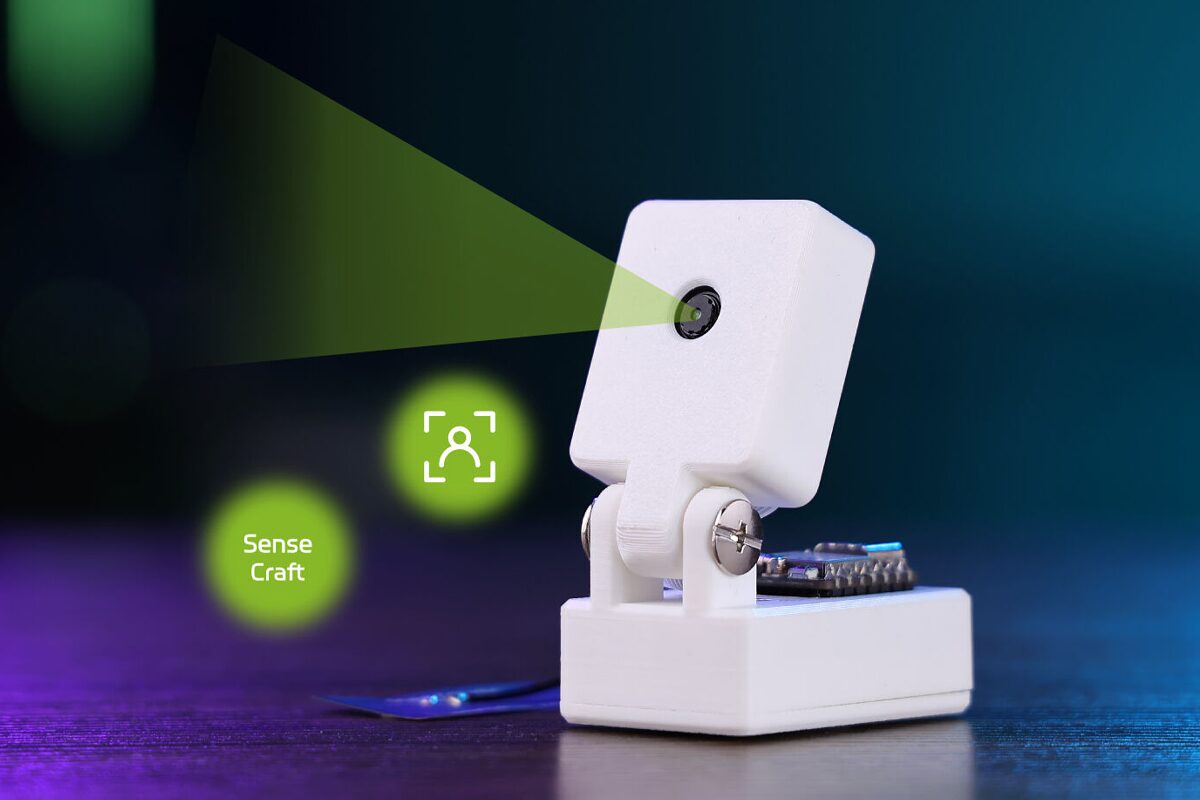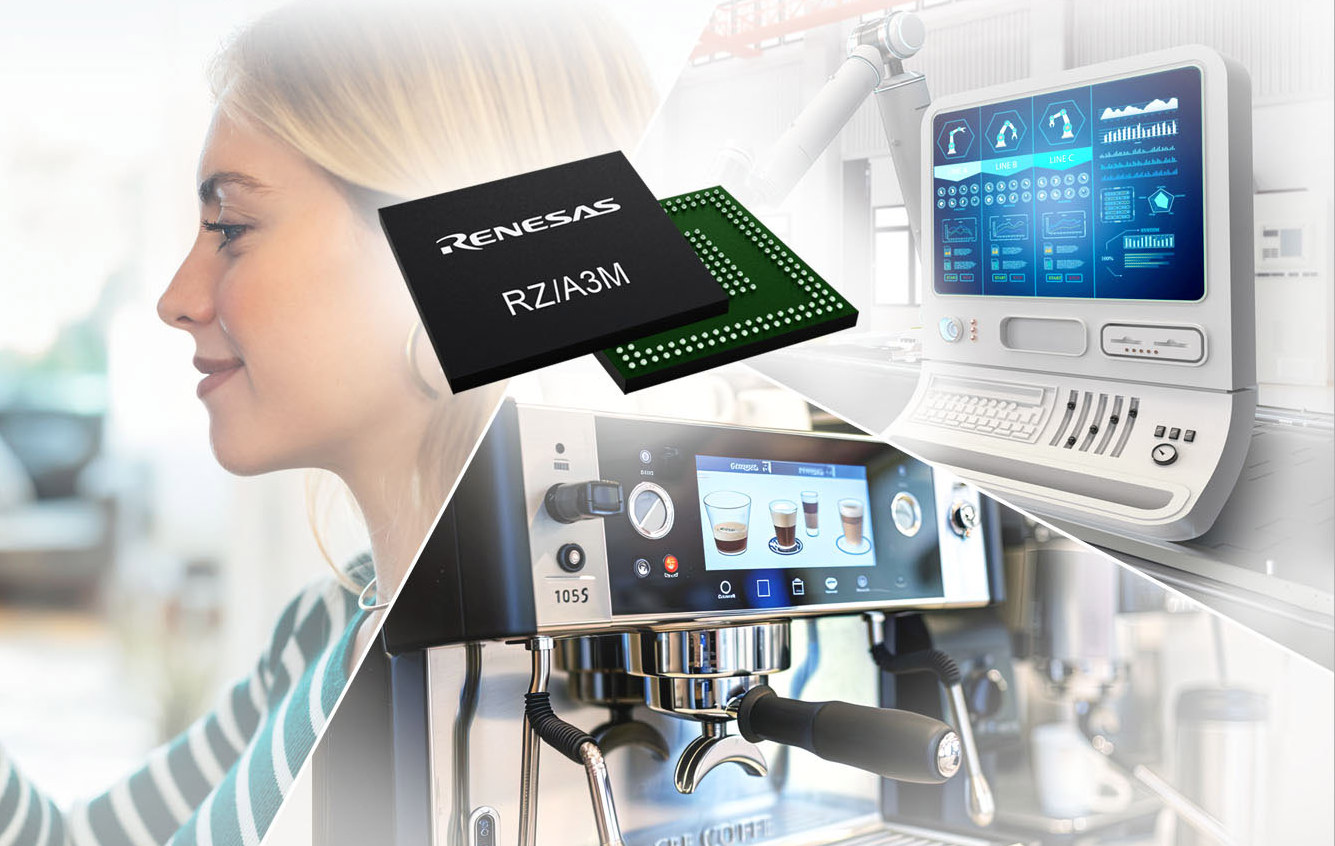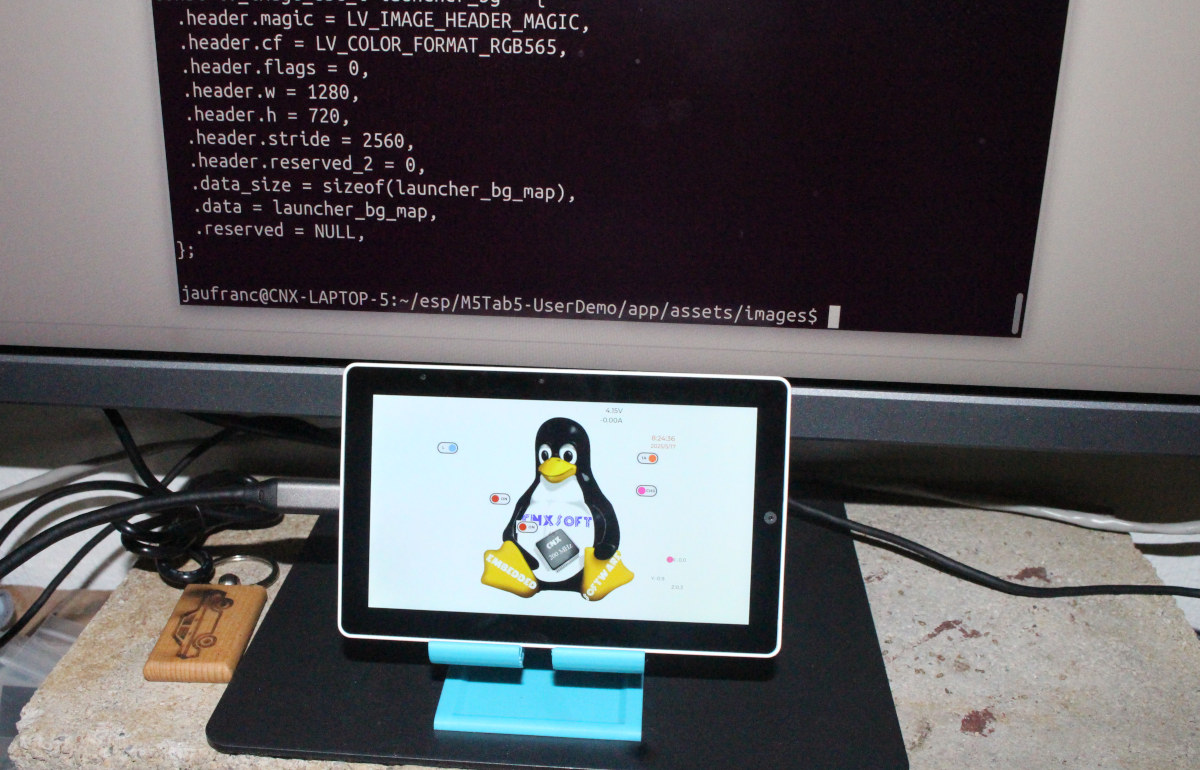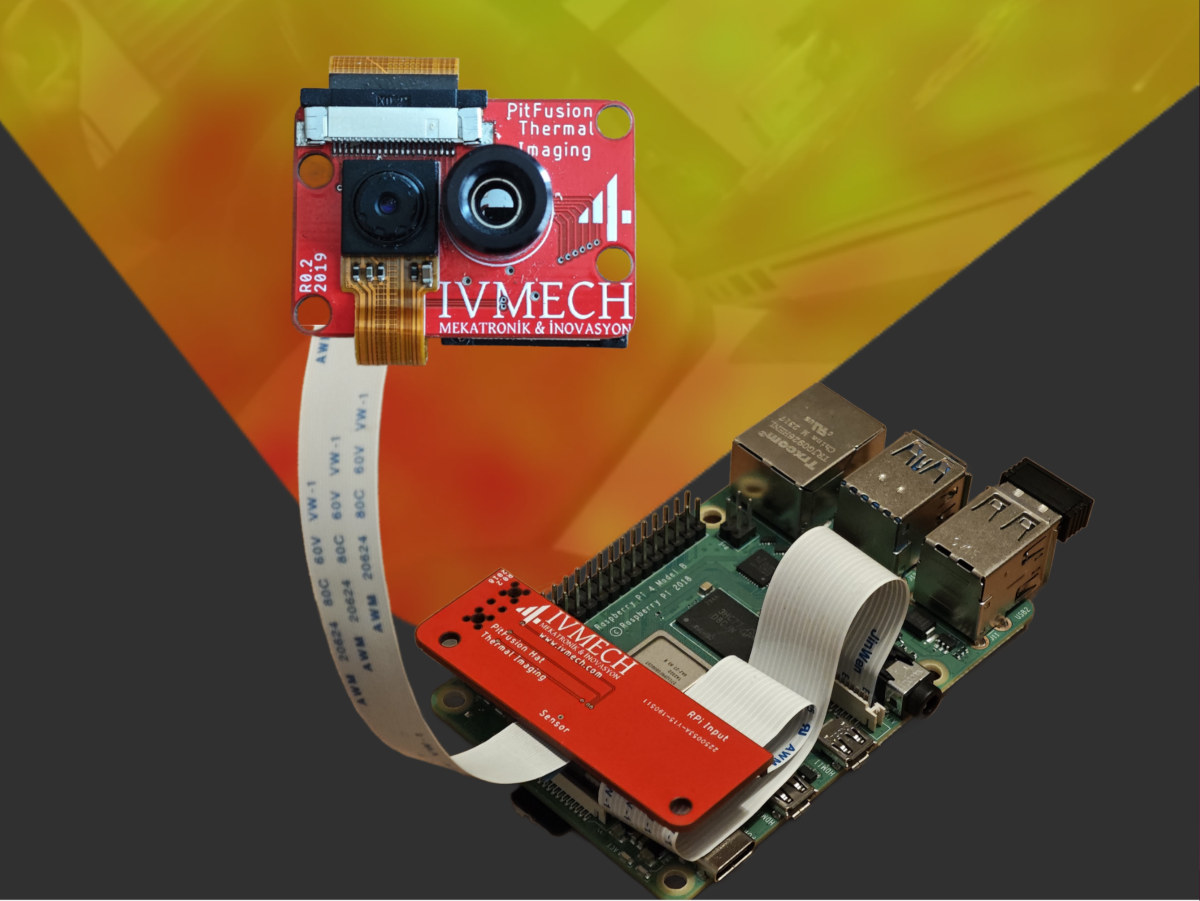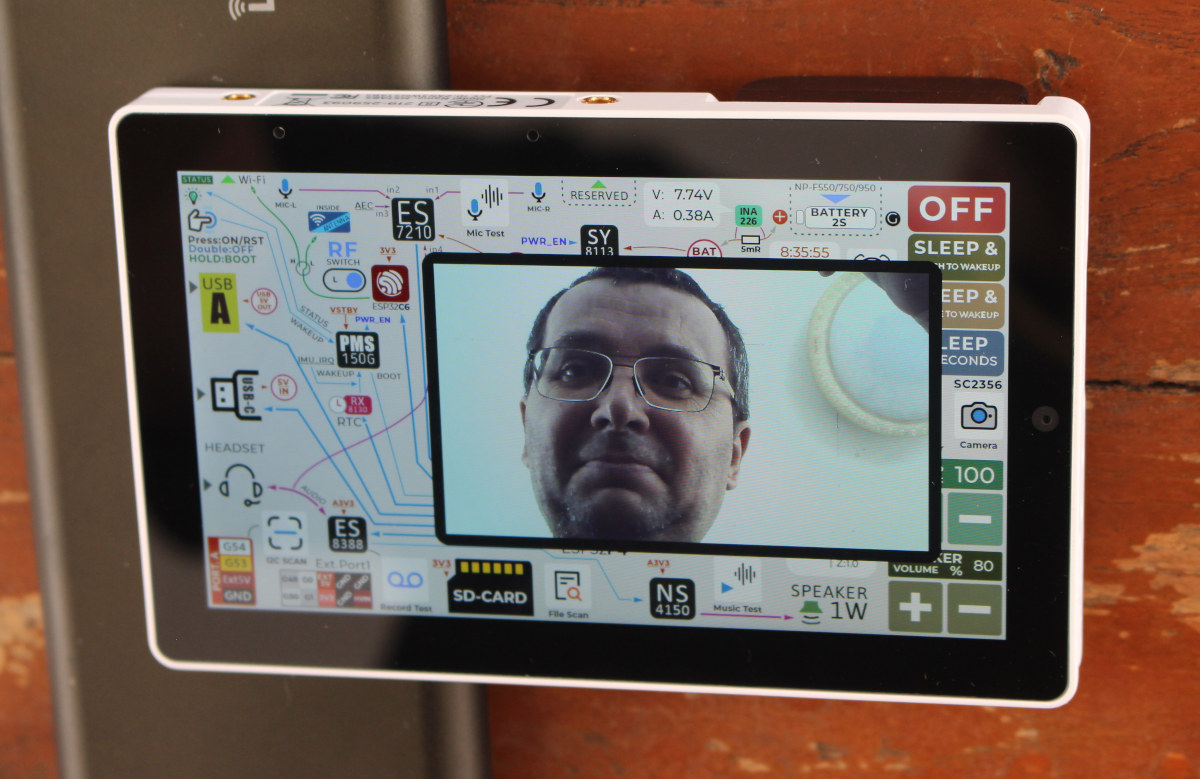Liberux NEXX is a Linux smartphone powered by a Rockchip RK3588S octa-core Cortex-A76/A55 processor coupled with 32 GB LPDDR4x and a 512GB eMMC flash, as well as a 6.34-inch 2400×1080 OLED display. We’ve seen other Linux smartphones in the past with the most popular likely being the Purism Librem 5 and Pine64’s PinePhone Pro. However, those are showing their age with older NXP i.MX 8M and Rockchip RK3399 SOCs, and the Liberux NEXX brings much-needed performance with a Rockchip RK3588S and 32GB of RAM, enabling mobile/desktop convergence to an extent. Liberux NEXX specifications: SoC – Rockchip RK3588S CPU – Octa-core processor with 4x Cortex-A76 cores @ up to 2.4 GHz, 4x Cortex-A55 cores @ up to 1.8 GHz GPU – Arm Mali-G610 GPU with OpenGL ES 3.2, OpenCL 2.2, and Vulkan 1.2 support VPU – 8Kp60 video decoder for H.265/AVS2/VP9/H.264/AV1 codecs, 8Kp30 H.265/H.264 video encoder AI accelerator – 6 TOPS NPU […]
ESP32-P4 development board features 3.4-inch or 4-inch round IPS touchscreen display
Waveshare ESP32-P4-WIFI6-Touch-LCD-3.4C and ESP32-P4-WIFI6-Touch-LCD-4C ESP32-P4-based development boards feature a 3.4-inch and a 4-inch round IPS display, respectively, a 10-point capacitive touchscreen, and a wide 170° viewing angle. They also integrate two microphones with echo cancellation for voice AI applications and offer Wi-Fi 6 and Bluetooth 5 (LE) connectivity via an ESP32-C6 module. Designed for AIoT and HMI projects, the boards also include USB ports, a camera connector, a speaker connector, and a microSD card slot. Target applications include Smart Home control panels, voice-controlled interfaces, digital dashboards, indoor environmental monitoring, PC performance monitoring, and other secure IoT and edge computing applications. Waveshare ESP32-P4-WIFI6-Touch-LCD-3.4C/4C specifications Main module – ESP32-P4-Core Module Microcontroller – ESP32-P4NRW32 MCU Dual-core RISC-V microcontroller @ 400 MHz with AI instructions extension and single-precision FPU Single-RISC-V LP (Low-power) MCU core @ up to 40 MHz GPU – 2D Pixel Processing Accelerator (PPA) VPU – H.264 and JPEG codecs support Memory – […]
Atum A3 Nano development board combines Agilex 3 FPGA and USB-Blaster III programmer (Crowdfunding)
Terasic’s Atum A3 Nano is a compact FPGA development board built around Altera’s largest Agilex 3 FPGA (A3CZ135BB18AE7S). The FPGA features 135K logic elements, embedded memory blocks (6.89 Mbit M20K, 1.4 Mbit MLAB), and 368 multipliers, making it suitable for demanding applications such as robotics, automotive systems, smart city infrastructure, consumer electronics, and advanced image processing. Measuring just 85 x 70 mm, the Atum A3 Nano board includes 64 MB SDRAM, Gigabit Ethernet, HDMI output, a microSD card slot, and an onboard USB-Blaster III programmer accessible via a USB Type-C port. Expansion options include a 40-pin GPIO header and two PMOD headers, and the board also features user I/Os like LEDs, buttons, and switches. Additionally, it supports add-ons such as displays, cameras, wireless modules, and motor control kits. Atum A3 Nano specifications: FPGA – Altera Agilex 3 A3CZ135BB18AE7S 135,110 logic elements 6.89 Mbit M20K, 1.4 Mbit MLAB 368 18×19 multipliers 4 I/O […]
XIAO Vision AI Camera combines ESP32-C3 and WiseEye2 HX6538 AI MCU with 5MP camera, supports SenseCraft no-code platform
Seeed Studio has recently released the XIAO Vision AI Camera, a compact, open-source smart ESP32-C3 AI Camera that integrates the Grove Vision AI Module V2, a XIAO ESP32C3 module, and an OV5647 5MP camera in a custom 3D-printed PLA case. One of the key components of the camera module is the WiseEye2 HX6538 chip, which features dual-core Arm Cortex-M55 processors and an Ethos-U55 NPU for edge AI computing. It also comes with Wi-Fi connectivity, turning it into an intelligent IP camera that easily integrates with Home Assistant for closed-loop automation (e.g., object detection triggering lights or alerts). Its 5MP OV5647 camera can record 1080p@30fps video and has adjustable focus. These features make this camera useful for industrial automation, smart cities, transportation monitoring, intelligent agriculture, and mobile IoT devices. XIAO Vision AI Camera Specifications Main MCU module – XIAO ESP32C3 SoC – Expressif Systems ESP32-C3 CPU – Single-core RISC-V microcontroller @ […]
1GHz Renesas RZ/A3M Cortex-A55 MPU embeds 128MB on-chip DDR3L for HMI applications
Renesas RZ/A3M is an Arm Cortex-A55 microprocessor (MPU) clocked at up to 1.0 GHz with 128MB on-chip DDR3L for cost-effective, yet advanced HMI applications with up to 1280×800 resolution. The RZ/A3M is similar to its predecessor, the Renesas RZ-A3UL, but it integrates 128MB on-chip RAM in a single System-in-Package (SiP), supports both MIPI DSI and parallel display interfaces, and adds a 2D graphics accelerator for smoother user interfaces. Renesas RZ/A3M specifications: CPU – Single-core Arm Cortex-A55 @ up to 1.0 GHz GPU – 2D drawing engine Memory 128KB on-chip SRAM with ECC Built-in 128MB DDR3L-1600 SDRAM (16-bit bus width) Storage SPI Multi I/O Bus Controller× 1 channel (4-bit Double data rate) Boot from Serial NAND or Serial NOR flash SD card host interface Display I/F – 4-lane MIPI DSI or Digital parallel output up to 1280×800 resolution @ 60 Hz Audio – Serial sound interface (SSI/I2S) USB – 1x USB […]
M5Stack Tab5 Review – Part 2: Getting started with ESP32-P4 firmware development using the ESP-IDF Framework and Arduino IDE
In the first part of the review, we checked out the hardware of the M5Stack Tab5 ESP32-P4 IoT development kit and tried the demo firmware, whose user interface allows the user to quickly experiment with the camera, microphone, speaker, WiFi, power consumption, GPIOs, RS485, and more. Since there’s no user application for the Tab5 at this stage, I decided to look into software development resources for the ESP32-P4 devkit in the second part of the review. I’ll first follow the instructions to build the demo firmware from source using the ESP-IDF framework, then analyze key aspects of the source and make some small modifications. After that, I’ll have a look at ESP32-P4 Arduino support via M5Unified and M5GFX library. ESP-IDF 5.4.1 installation and ESP32-P4 Hello World program The first step is to get the ESP-IDF 5.4.1 and configure ESP32-P4 following the instructions on the Espressif website, before testing it with […]
PitFusion thermal imager for Raspberry Pi combines Melexis MLX90640 sensor and RGB camera (Crowdfunding)
IVMECH Mechatronics’ PitFusion is a thermal imager designed for the Raspberry Pi based on a Melexis MLX90640 32×24 thermal sensor and an Adafruit 0V5647 RGB sensor comparable to the Raspberry Pi Camera Module v1.3. The kit enables users to capture thermal and visible images simultaneously, and can be useful for automation, robotics, security (human/pet motion detection), non-contact temperature measurement, and environmental monitoring applications. PiFusion specifications: Thermal Sensor – Adafruit LX90640 with 32 x 24 pixel array Camera Sensor – Adafruit 0V5647 comparable to the RPi Camera Module v1.3 with 2592 x 1944 resolution Temperature Range – -40°C to 300°C Frame Rate – Up to 32 Hz (thermal), 30 fps (camera) Spectral Range – 8 µm to 14 µm (optimal for human body and object detection) Host Interfaces – I2C for thermal sensor, CSI for camera) Dimensions – 40 x 30 x 10 mm Weight – 15 grams IVMECH says the […]
M5Stack Tab5 Review – Part 1: Unboxing, teardown, and first try of the ESP32-P4 and ESP32-C6 5-inch IoT devkit
I’ve just received a review sample of the M5Stack Tab5 ESP32-P4 IoT development kit, which looks like a small tablet with a 5-inch touchscreen display, a 2MP front-facing camera, an ESP32-C6 WiFi 6, Bluetooth, and 802.15.4 wireless module, and various expansion interfaces. Today, I’ll go through an unboxing, a (partial) teardown, and have a quick try with the default firmware and GUI, before checking out how to program the device in the second part of the review. M5Stack Tab5 unboxing I received the Tab5 in its retail package along with an M5Stack-branded transparent sticky tape roll. Not sure why, but thanks M5Stack, sticky tape is always useful, so appreciated! The bottom side of the package has all the key features and specifications that we already covered in our article about the Tab5. The package contains the Tab5 itself, a 2,000mAh/14.8Wh battery, and a cable with six wires for the ExtPort2 […]



